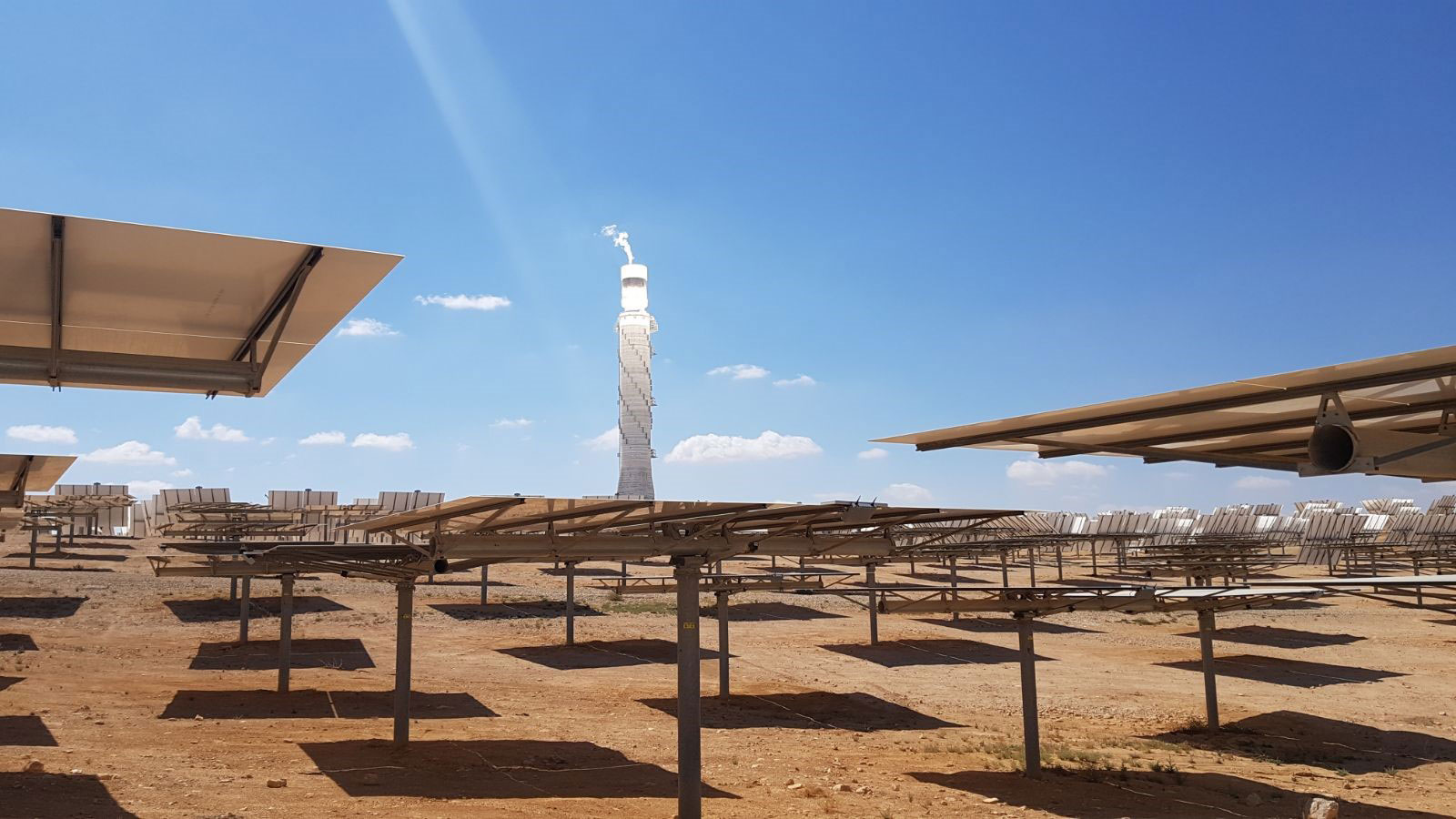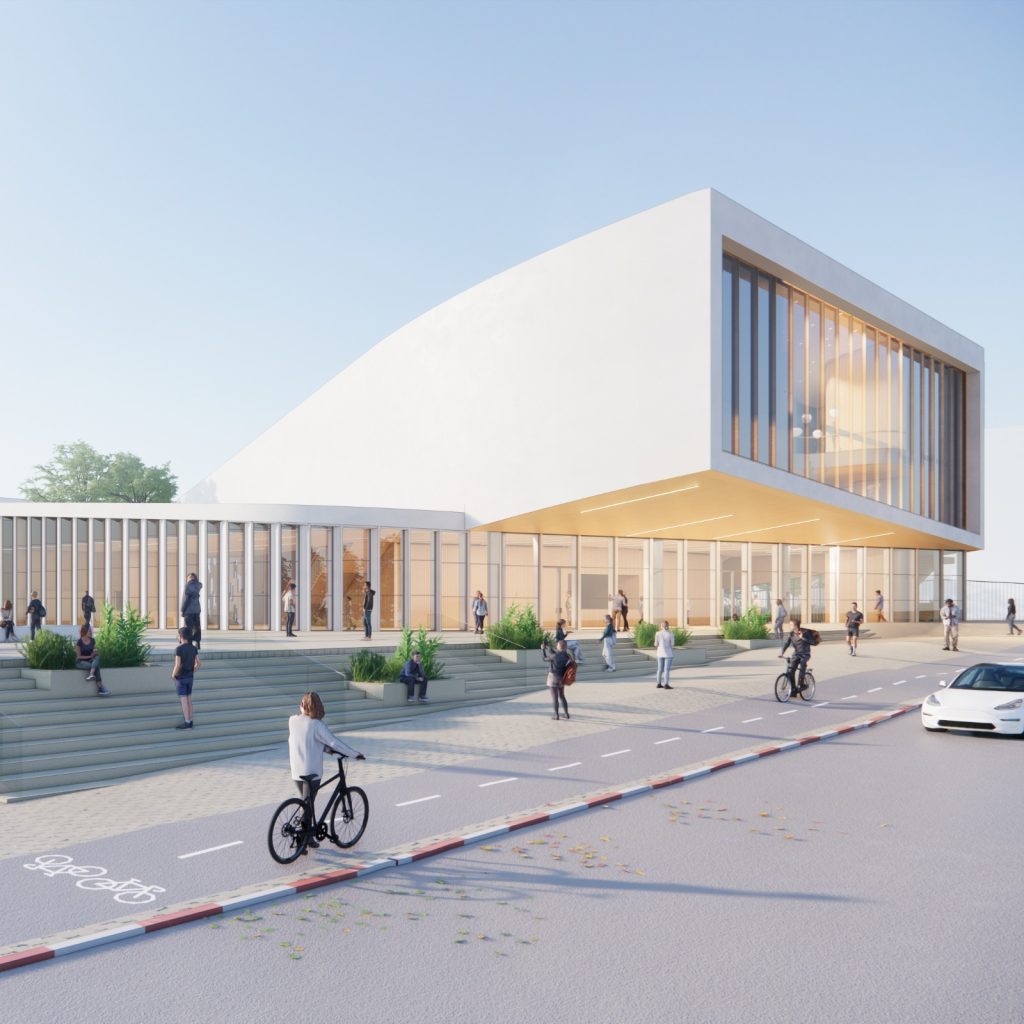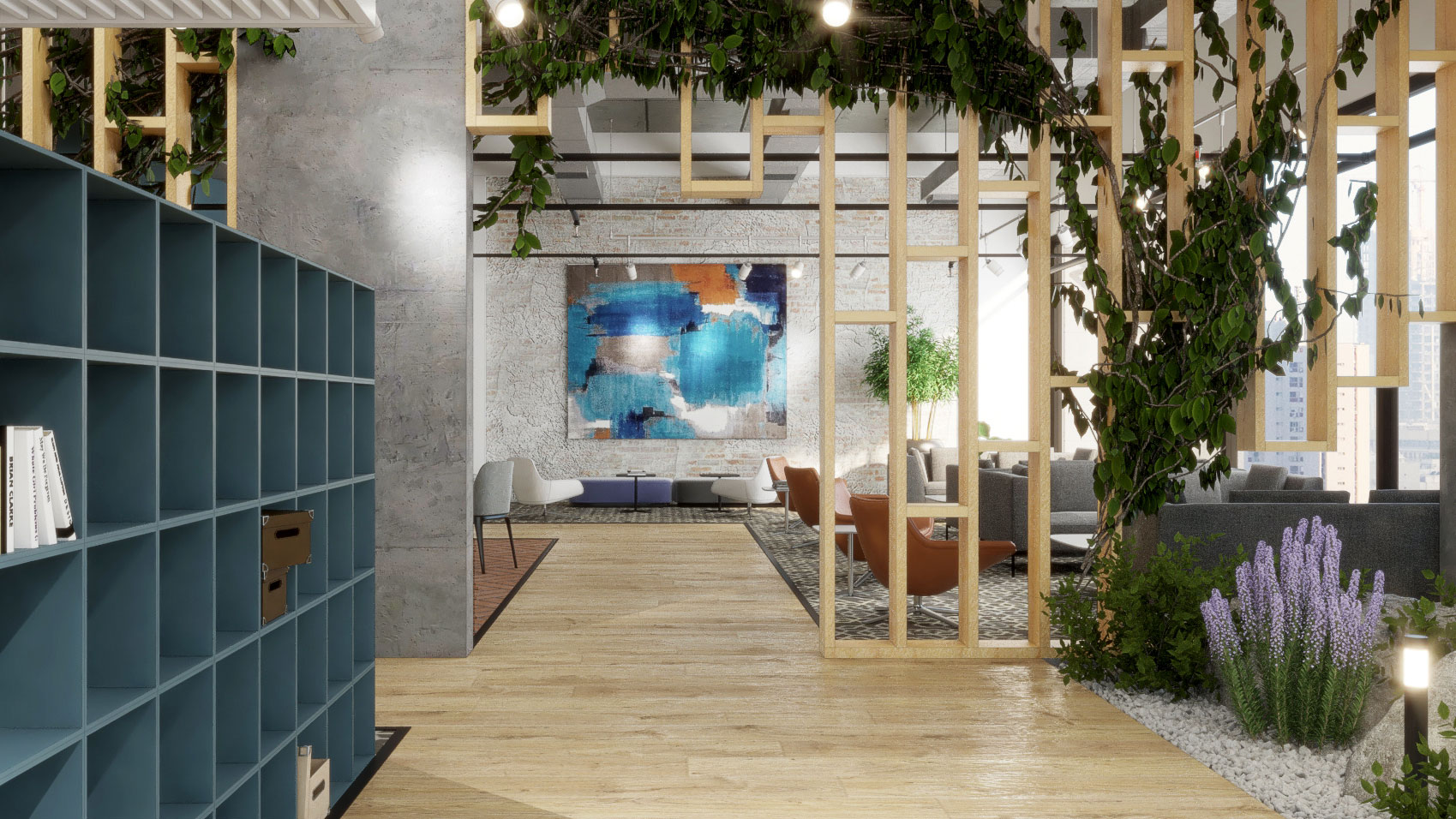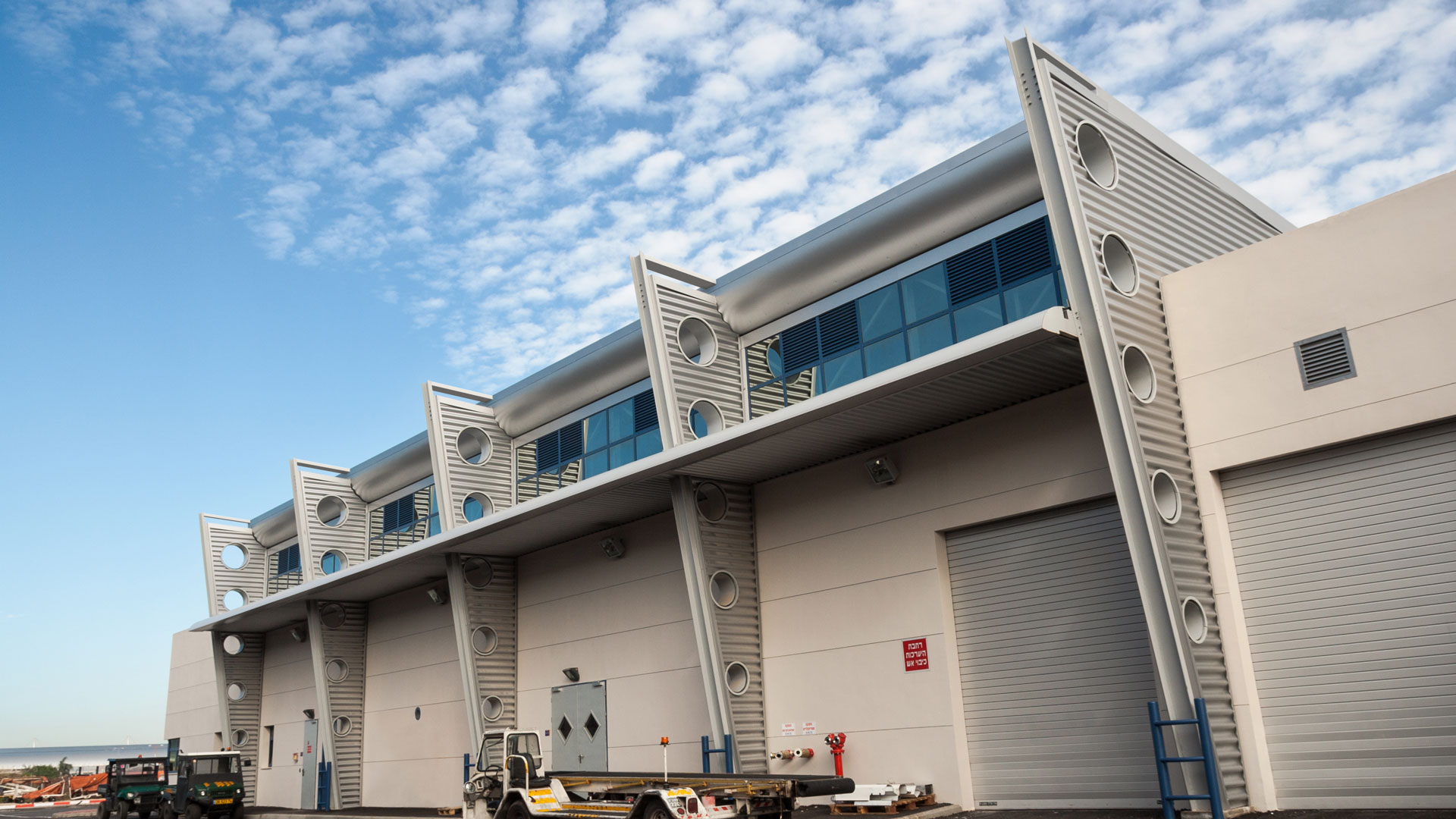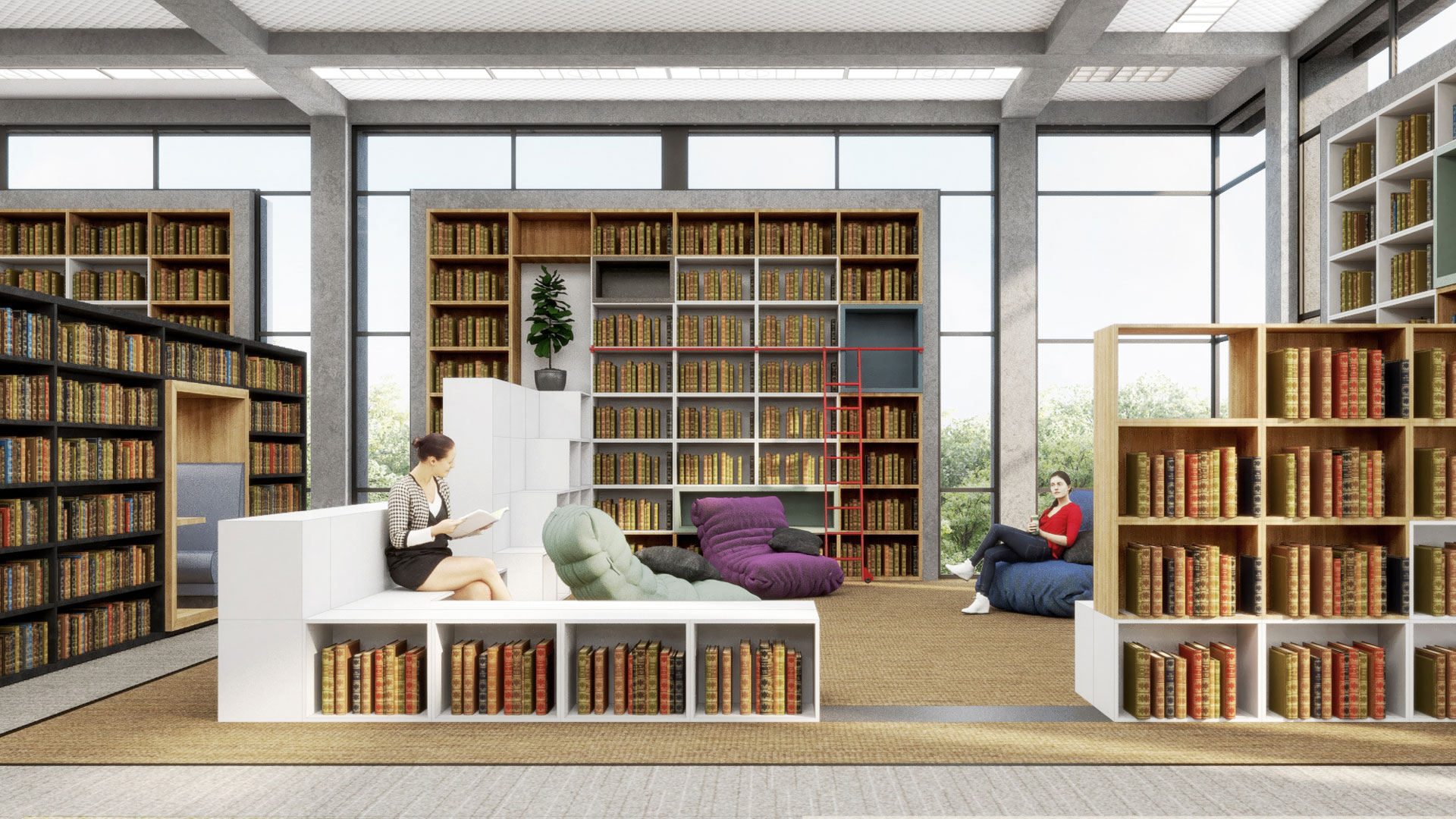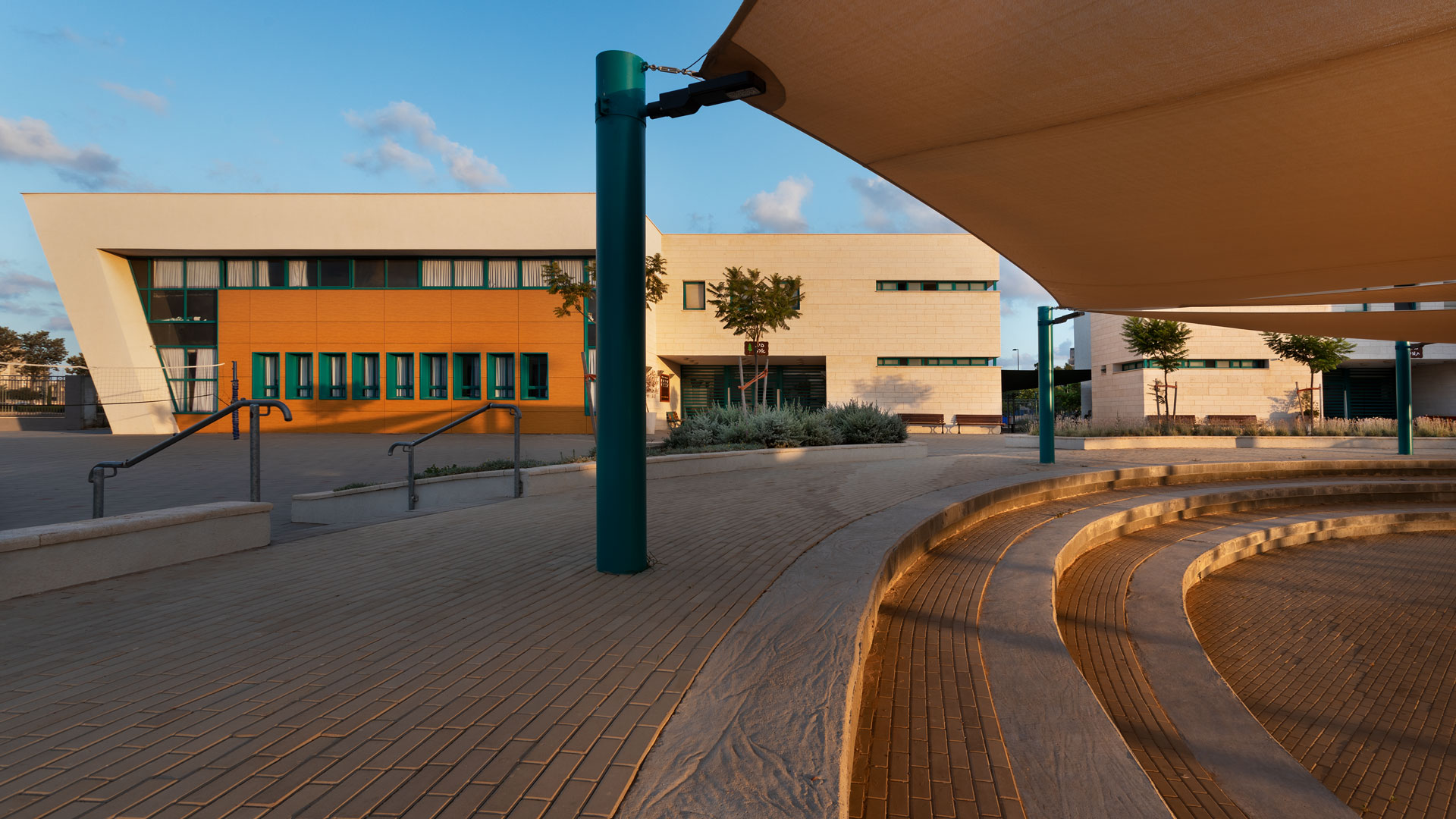The Need
The Ashalim site was selected by the national council in 2004, following the recommendations of a professional team for the examination of locations for solar power stations in Israel’s south region.
Three stations are located on the site – two solar thermal stations each with a 121 megawatt capacity, and a photovoltaics plant with a 30 megawatt capacity.
The Vision
The Ashalim Power Plant was built using the BSE technology based on the solar tower method. In line with this method, a heliostats field was installed which is composed of computerized mirrors following the sun’s movement. The light reflected from the mirrors is directed towards a receptor at the top of the solar tower, which heats the water to more than 550 degrees celsius, and a pressure of more than 150 Atmospheres, generating electricity through steam.

The Design
The station has three main areas:
- The heliostats field – a solar field composed of 50,000 computerized mirrors spanning an area of 260 hectares; the largest component of the station.
- The solar tower – at the height of 250 m, the solar tower is composed of concrete constructions coated with a stainless-steel mesh of interchanging density, which is supported by a system of thin steel rods and cables; thus, an interesting interaction between light and shadow is created. The casing was designed by the architects Eran Ziv and Yizhar Kedmi, who won an international design competition.
- The power block area – a complex of maintenance and operations building intended for electricity generation, as is customary for steam-based facilities. After flowing through the turbine, the steam returns to the solar tower and condenses back into water for reuse. This area is located in the center of the site and spans an area of 3.5 hectares.
From a visual perspective, we emphasized the appearance of the station from both its near and far environments, taking into account the proportions of the station’s different components.
The heliostats field and Power Block, which are essentially horizontal elements and take up most of the station’s land, are observed against the ground, while the vertical element of the solar tower is observed against the sky and stands out as an icon amongst the desert surroundings.
The finishing materials we used purposefully interact with and reflect the environment’s hues – the horizontal elements reflect the different shades of the nearby hills and the yellow-brown ground layers are reflected in the Power Block’s coloration, while the solar tower is designed to reflect the sky’s hues as they appear in real-time.




